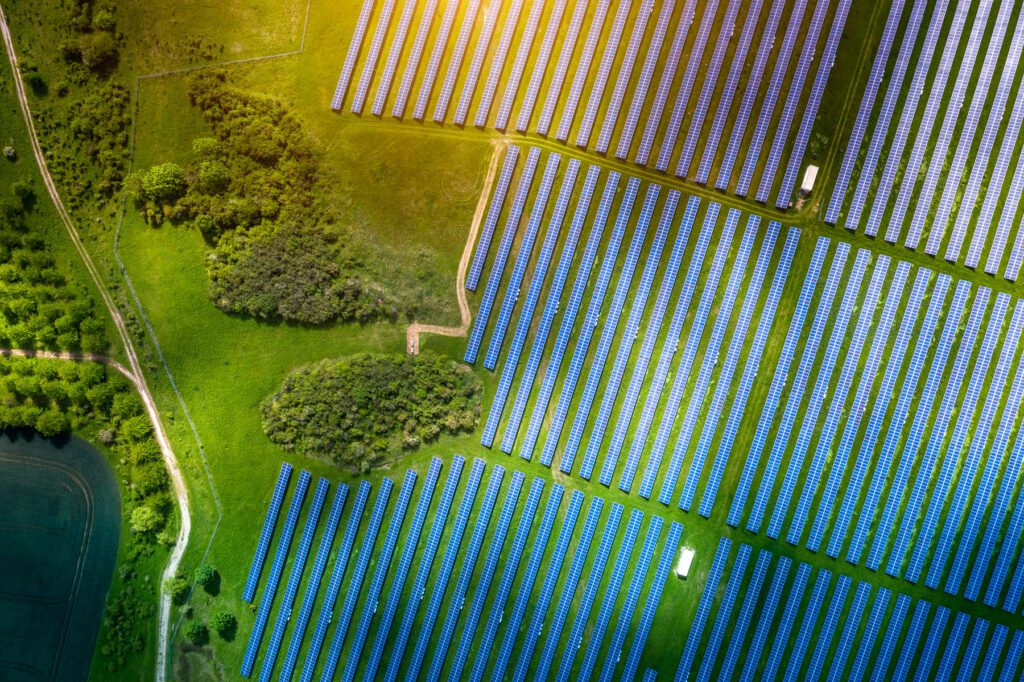Authors
Renewable energy generation schemes come in many shapes and sizes. Agricultural land and buildings provide the opportunity to take advantage of these schemes be they for powering the farm operations or securing a regular income stream.
Energy generation schemes need planning consent. The various consent regimes available are tiered according to the scheme size. This article looks at those regimes across England, Wales and Scotland.
Permitted Development
All development needs planning permission, and energy generation schemes are development. However certain schemes have the benefit of permitted development rights. These rights ‘grant’ planning permission subject to certain conditions and restrictions. Where they exist, they can be relied upon. Often no approval is required, and this makes them very attractive. However, caution is needed to ensure that the permitted development rights are properly available.
In England, small-scale renewable energy schemes can be implemented under Part 14 of Schedule 2 of the 2015 General Permitted Development Order. These are for small schemes, which typically will only contribute to a farm’s energy needs, but as energy prices rise, they may still be helpful.
They have recently become even more flexible. If you have a sufficiently large shed roof, it is now possible to install over 1 megawatt of solar panel capacity. There are also new rights permitting the installation of ground and water source heat pumps for certain sizes as well as biomass heating systems.
The permitted development rights regime over the borders in Scotland and Wales are generally less flexible, but they may still be worth exploring.
Planning permission
The larger energy generating schemes require planning permission.
The route to consent depends on where in the UK you are: the consenting regimes differ between England, Scotland, Wales, or Northern Ireland.
In England, a solar farm with a generating capacity below 50 megawatts requires planning permission from the Local Planning Authority under the Town and Country Planning Act 1990. Above 50 megawatts the solar farm is considered to be a ‘Nationally Significant Infrastructure Project’ which requires a Development Consent Order (DCO) from the Secretary of State under the 2008 Planning Act.
In Scotland, the thresholds are currently the same as in England but schemes above 50 megawatts need to secure deemed planning permission under the section 36 of the Electricity Act 1989.
In Wales, a solar farm with a generating capacity between 10 and 350 megawatts is classified as a ‘Development of National Significance’ and applications for these schemes are decided by the Welsh Ministers. Above 350 megawatts a DCO is required.
Large and super-large scale solar is popular in England with many projects already consented and many more in the pipeline. There is a conflict between energy production and food production, and this is managed in the planning system through the encouragement of the use of less productive agricultural land.
Onshore wind projects in England are becalmed in the planning system’s Doldrums. This is because England’s national planning policy requires that the proposed turbine’s impacts, as identified by the affected local community, have been appropriately addressed and the proposal has community support. Wind turbines are marmite: some like them some don’t, and if a local objector doesn’t like them it is hard for operators to appropriately address the objector’s concerns.
The Welsh and Scottish administrations have taken a much more favourable approach toward the development of onshore wind. They typically allocate suitable areas for wind farms and have policies to deal with mitigation of the turbines’ impacts.
Grid constraints
Whatever technology is proposed for electricity generation, the project will not progress unless it can be connected to the grid. Securing a viable grid connection is difficult across the UK. The national grid needs upgrading, and the government is focusing on this, and as it does so, more sites will become viable.
Anaerobic digestion plants are capable of producing methane. This can be used to power an engine on site to produce electricity, or it supplied into the gas grid.
Opportunities
Large scale renewables projects are expensive to consent, expensive to construct and expensive to operate. This is a barrier to entry, but there are still opportunities for landowners. Agricultural land is needed for solar and land near grid connections is particularly desirable to promoters of large-scale solar schemes. Those promoters will, through an option for lease agreement, take on the risk of obtaining planning permission and securing the grid connection and then construct the scheme on your land. In return, you’ll receive rental payment for the 30 or more years of the lease.
Conclusions
Planning and consenting are major elements to renewable energy projects, but often also major barriers. With this in mind, landowners considering renewable development should take appropriate advice at the earliest stage possible.
If you would like to discuss any of the issues raised in this article, please contact Fergus Charlton or Harriet Grimes.
Print article


